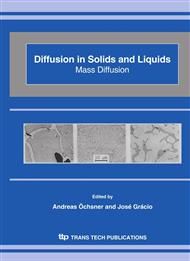[1]
International technology roadmap for semiconductors, edition 2005, executive summary, figure 8 (2005).
Google Scholar
[2]
M. Horstmann, A. Wei, T. Kammler, J. Hntschel, H. Bierstedt, et al., in Technical Digest of the 2005 International Electron Devices Meeting (IEDM) (IEEE, Piscataway, 2005), pp.233-236.
Google Scholar
[3]
S. Inumiya, Y. Akasaka, T. Matsuki, F. Ootsuka, K. Torii, et al., in Technical Digest of the 2005 International Electron Devices Meeting (IEDM) (IEEE, Piscataway, 2005), pp.23-26.
DOI: 10.1109/iedm.2005.1609256
Google Scholar
[4]
S. Harrison, P. Coronel, F. Leverd, R. Cerutti, R. Palla, et al., in Technical Digest of the 2003 International Electron Devices Meeting (IEDM) (IEEE, Piscataway, 2003), pp.449-452.
Google Scholar
[5]
J. Lolivier, J. Widiez, A. Vinet, T. Poiroux, F. Dauge, et al., in R. P. Mertens and C. L. Claeys, eds., ESSDERC 2004 (IEEE, Piscataway, 2004), pp.77-80.
Google Scholar
[6]
D. Hisamoto, W. -C. Lee, J. Kedzierski, H. Takeuchi, K. Asano, et al., IEEE Trans. Electron Devices, vol. 47, (2000), pp.2320-2325.
DOI: 10.1109/16.887014
Google Scholar
[7]
Synopsys TCAD, release y-2006. 6, Synopsys, Inc., Mountain View, CA, USA (2006).
Google Scholar
[8]
M. G. Ancona and G. J. Iafrate, Phys. Rev. B, vol. 39, (1989), p.95369540.
Google Scholar
[9]
A. E. Michel, W. Rausch, P. A. Ronsheim, and R. H. Kastl, Appl. Phys. Lett., vol. 50, (1987), pp.416-418.
Google Scholar
[10]
L. Pelaz, M. Jaraiz, G. H. Gilmer, H. -J. Gossmann, C. S. Rafferty, et al., Appl. Phys. Lett., vol. 70, (1997), pp.2285-2287.
DOI: 10.1063/1.118839
Google Scholar
[11]
M. -J. Caturla, T. Diaz de la Rubia, J. Zhu, and M. Johnson, in T. Diaz de la Rubia, S. Coffa, P. A. Stolk, and C. S. Rafferty, eds., Defects and Diffusion in Silicon Processing (1997), vol. 469 of Mat. Res. Soc. Symp. Proc., pp.335-340.
DOI: 10.1557/proc-469-335
Google Scholar
[12]
C. J. Ortiz, P. Pichler, T. F¨uhner, F. Cristiano, B. Colombeau, et al., J. Appl. Phys., vol. 96, (2004), pp.4866-4877.
Google Scholar
[13]
P. Pichler, C. J. Ortiz, B. Colombeau, N. E. B. Cowern, E. Lampin, et al., in Technical Digest of the 2004 International Electron Devices Meeting (IEDM) (IEEE, Piscataway, 2004), pp.967-970.
DOI: 10.1109/iedm.2004.1419347
Google Scholar
[14]
A. Armigliato, D. Nobili, P. Ostoja, M. Servidori, and S. Solmi, in H. R. Huff and E. Sirtl, eds., Semiconductor Silicon 1977 (1977), vol. 77-2 of Electrochem. Soc. Proc., pp.638-647.
Google Scholar
[15]
P. Pichler, in D. F. Downey, M. E. Law, A. P. Claverie, and M. J. Rendon, eds., Silicon Front-End Junction Formation Technologies (2002), vol. 717 of Mat. Res. Soc. Symp. Proc., pp. C3. 1. 1- C3. 1. 12.
Google Scholar
[16]
W. Windl, X. -Y. Liu, and M. P. Masquelier, phys. stat. sol. (b), vol. 226, (2001), pp.37-45.
Google Scholar
[17]
W. Windl, M. M. Bunea, R. Stumpf, S. T. Dunham, and M. P. Masquelier, Phys. Rev. Lett., vol. 83, (1999), pp.4345-4348.
DOI: 10.1103/physrevlett.83.4345
Google Scholar
[18]
Z. N´enyei, J. Niess, S. Buschbaum, K. Meyer, W. Dietl, et al., in P. Timans, E. Gusev, F. Roozeboom, M. Ozturk, and D. L. Kwong, eds., Rapid Thermal and Other Short-Time Processing Technologies III (2002).
Google Scholar
[19]
W. Lerch, S. Paul, J. Niess, S. McCoy, T. Selinger, et al., Materials Science and Engineering B, vol. 124-125, (2005), pp.24-31.
Google Scholar


